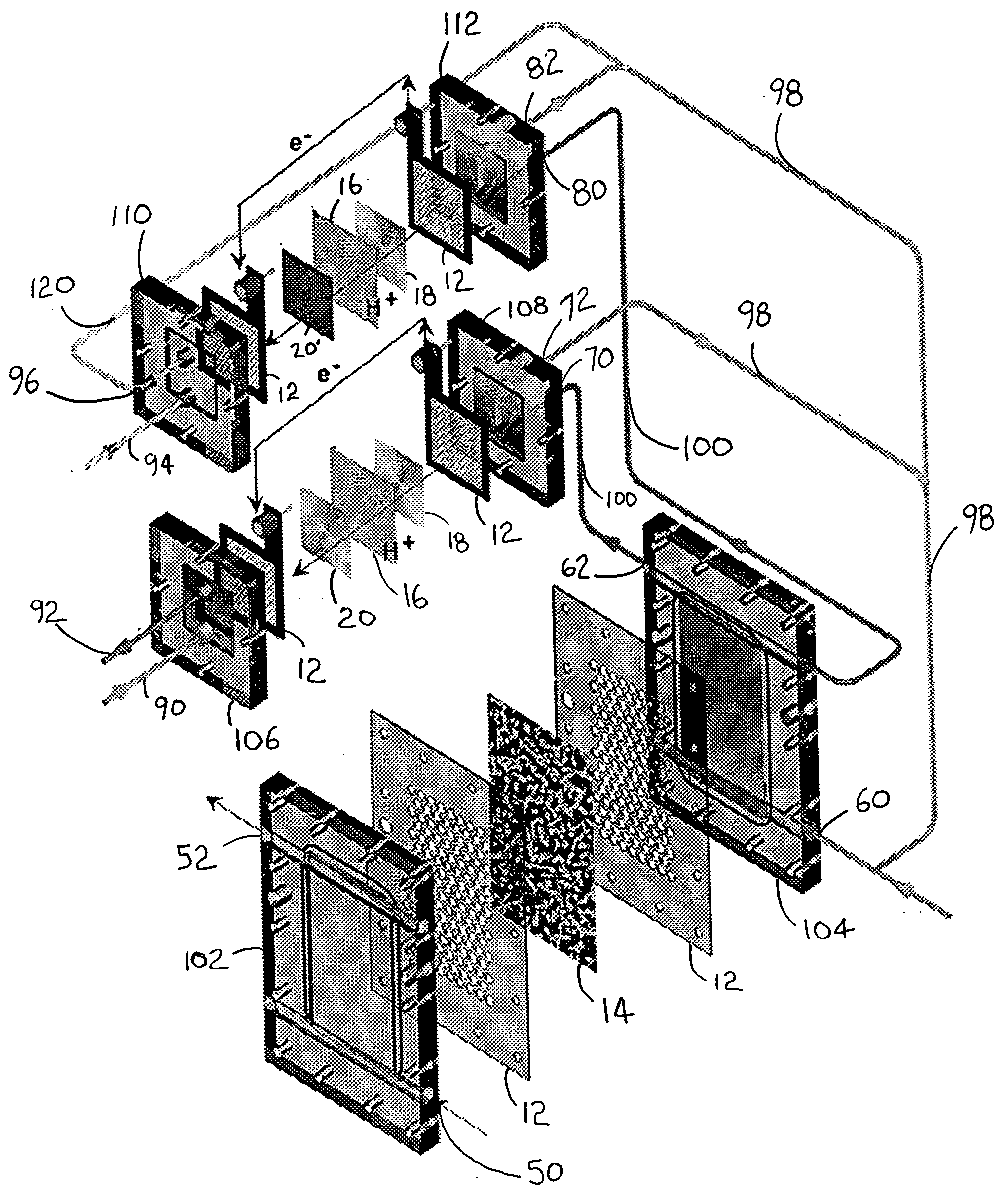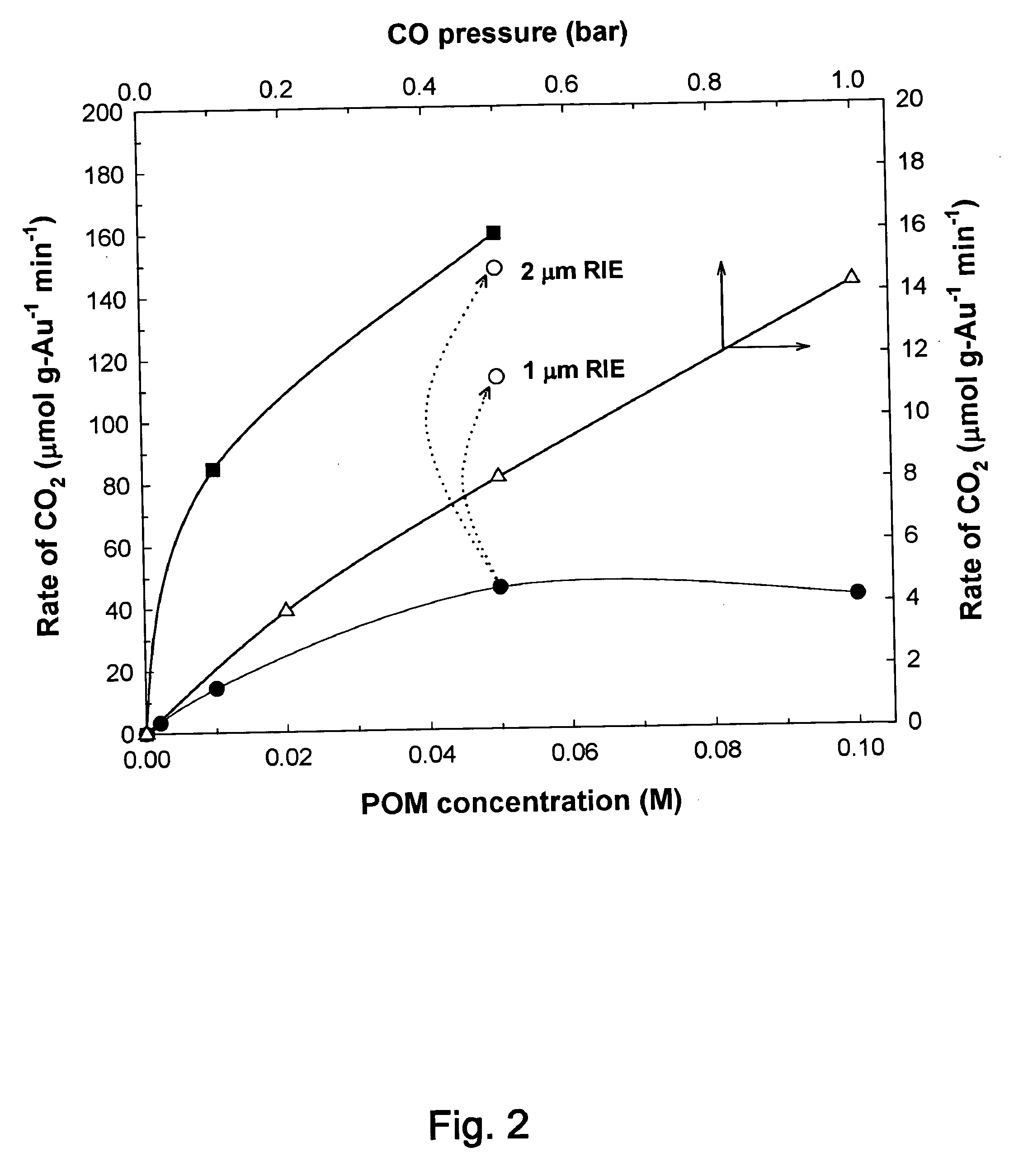Catalytic method to remove CO and utilize its energy content in CO-containing streams
a co-containing stream and catalytic technology, applied in the direction of indirect fuel cells, sustainable manufacturing/processing, separation processes, etc., can solve the problems of wgs reaction being a major bottleneck, and achieve the effects of reducing the cost of fuel cells, and minimizing (or even eliminating) the us
- Summary
- Abstract
- Description
- Claims
- Application Information
AI Technical Summary
Benefits of technology
Problems solved by technology
Method used
Image
Examples
examples
[0094] The following Examples are included solely to provide a more complete description of the invention disclosed and claimed herein. The Examples do not limit the scope of the invention in any fashion.
Materials:
[0095] Activated Carbon Fibers (ACF) were in the form of a woven fabric that was purchased commercially (“Kothmex”-brand fibers from Taiwan Carbon Technology Co., Taichung, Taiwan, catalog no. AW 1104.). This fabric is 100% woven ACF, has a density of 150 g / m2, and a nominal thickness of 0.5±0.1 mm. Its surface area, as measured by the Brunner-Emmett-Teller (BET) method, is 1100 m2 / g, with an average pore size of 19-20 Å.
[0096]“E-Tek”-brand carbon cloth was purchased from De Nora North America, Inc., Somerset, N.J. The fabric is a plain weave, has a density of 116 g / m2, and a nominal thickness of 0.35 mm. The fabric is non-wet proofed. Lot no. 9615 was used in the Examples.
[0097] All gasses (hydrogen, helium, oxygen, etc.) were purchased from AGA Gas, Inc, Cleveland, ...
PUM
| Property | Measurement | Unit |
|---|---|---|
| temperature | aaaaa | aaaaa |
| temperatures | aaaaa | aaaaa |
| temperature | aaaaa | aaaaa |
Abstract
Description
Claims
Application Information
 Login to View More
Login to View More - R&D
- Intellectual Property
- Life Sciences
- Materials
- Tech Scout
- Unparalleled Data Quality
- Higher Quality Content
- 60% Fewer Hallucinations
Browse by: Latest US Patents, China's latest patents, Technical Efficacy Thesaurus, Application Domain, Technology Topic, Popular Technical Reports.
© 2025 PatSnap. All rights reserved.Legal|Privacy policy|Modern Slavery Act Transparency Statement|Sitemap|About US| Contact US: help@patsnap.com



